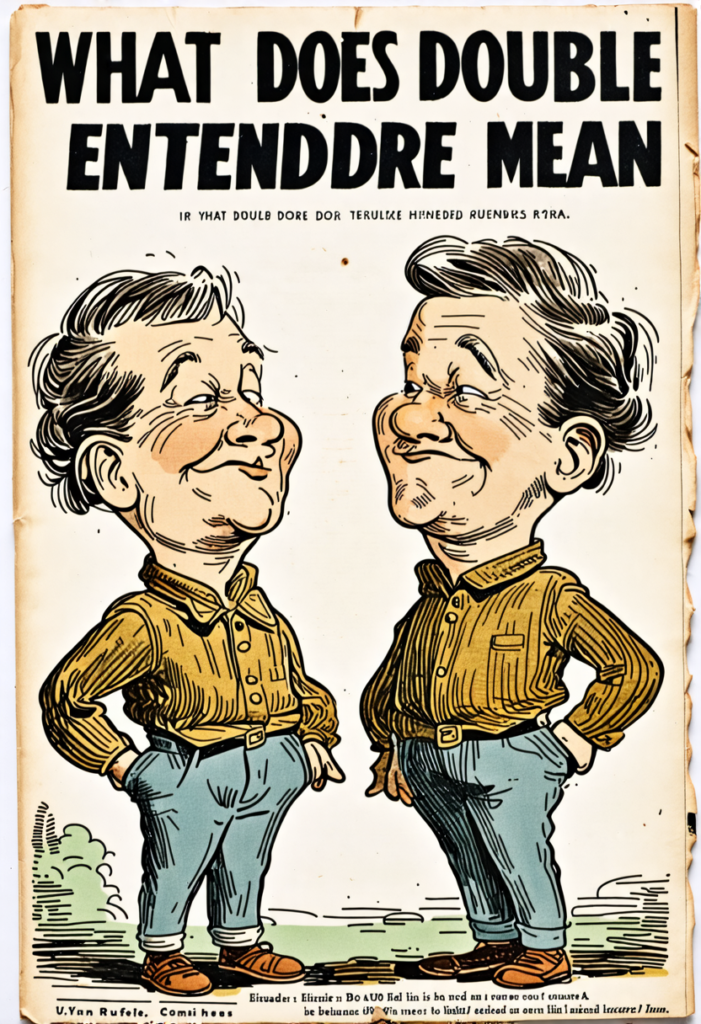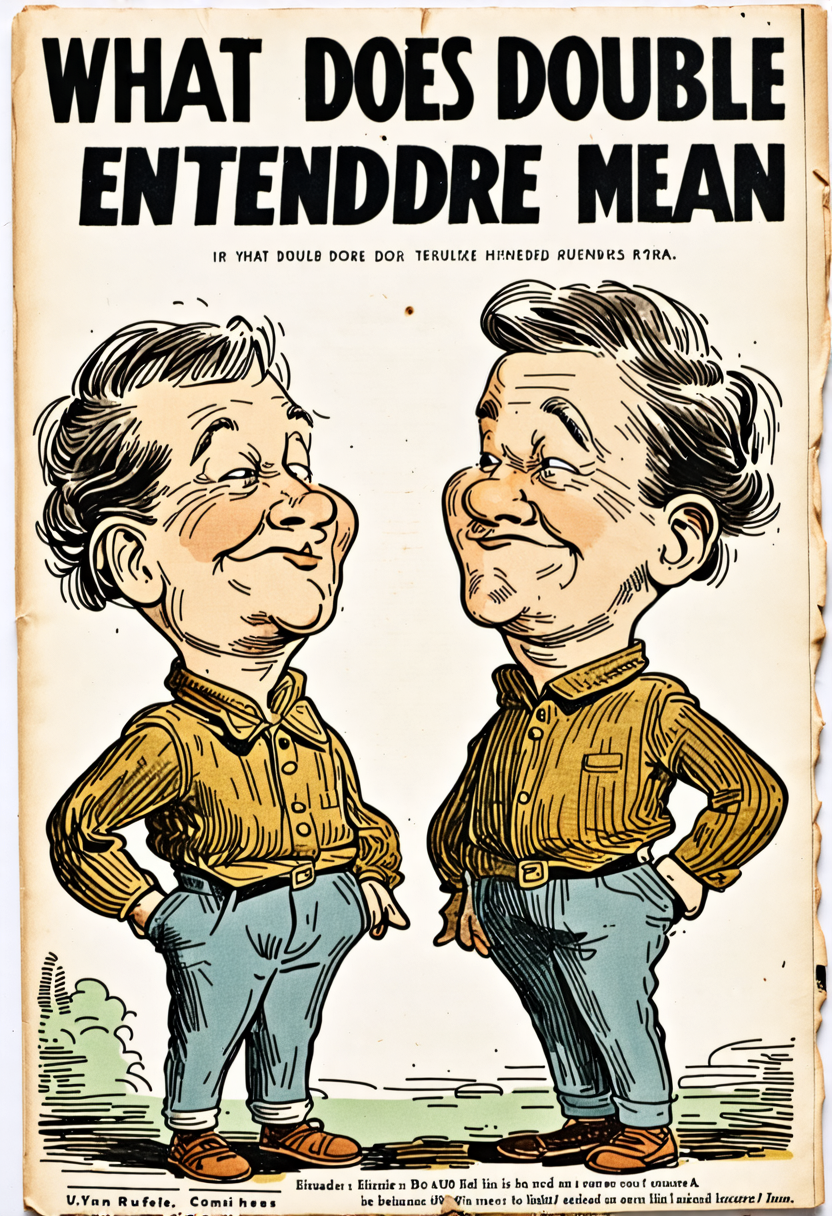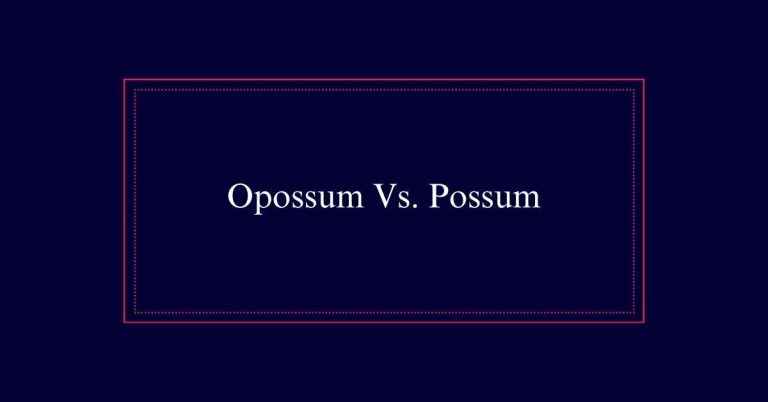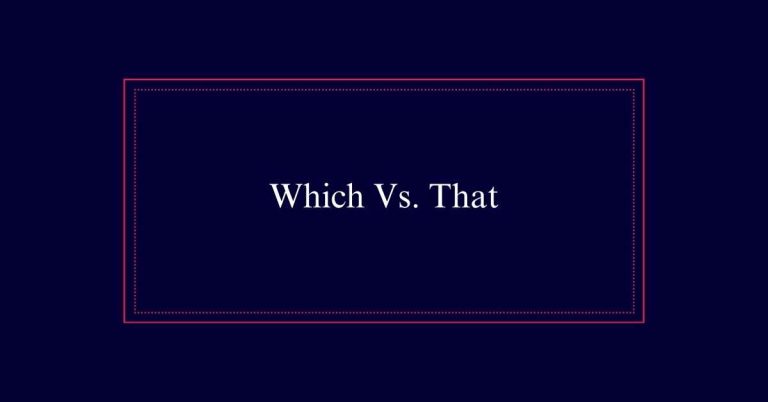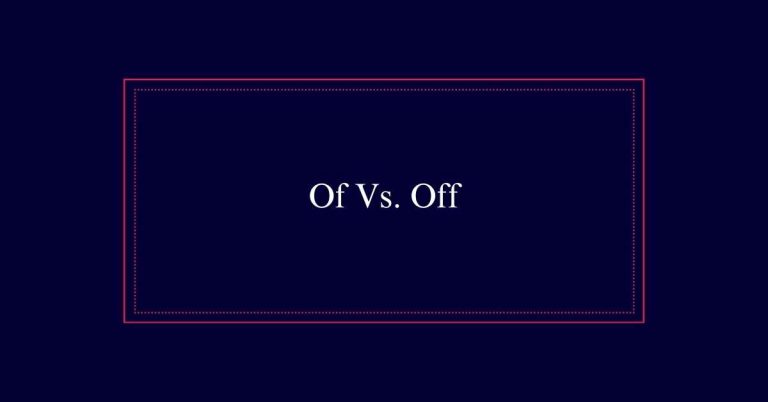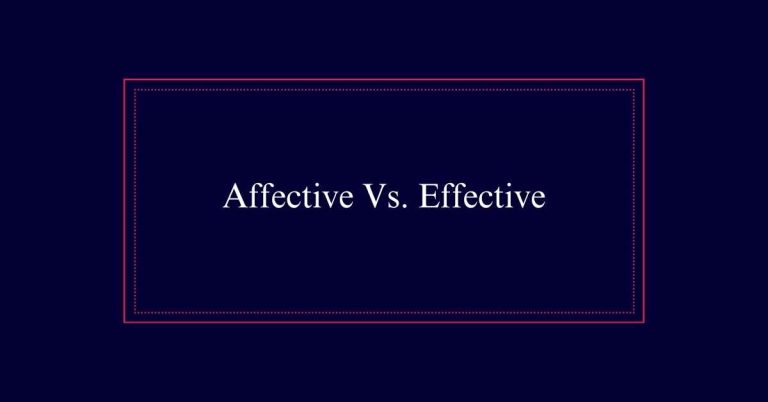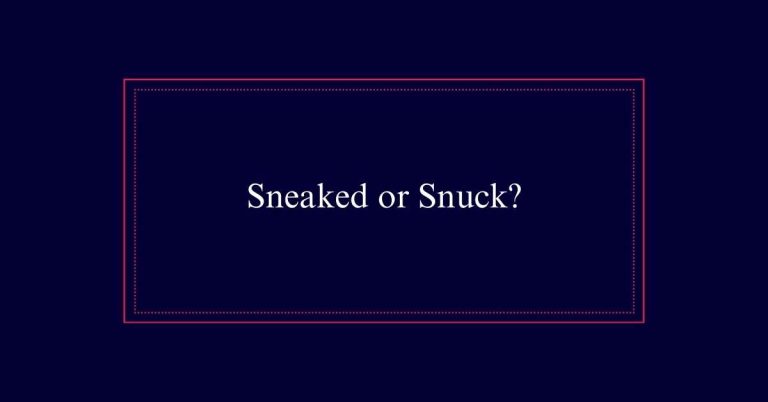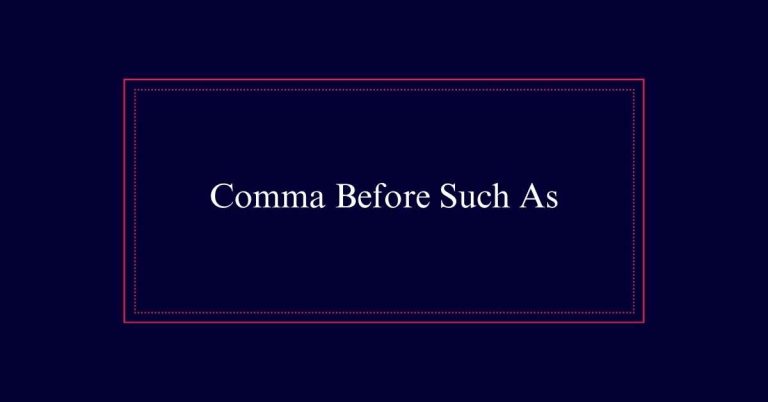What Does Double Entendre Mean?
A double entendre is a phrase with two interpretations: one straightforward and the other often suggestive or risqué. Common in literature, movies, and conversations, it adds humor and intrigue. For example, “new position” might refer to a job role or something more suggestive.
Shakespeare and Chaucer famously used double entendres to enrich their narratives. This rhetorical device makes communication engaging and thought-provoking by embedding layers of meaning. Examples in media include catchy headlines like, “DRUNK GETS NINE MONTHS IN VIOLIN CASE.
Definition of Double Entendre
A double entendre is a phrase or expression with two possible interpretations, typically one being straightforward and the other more suggestive or risqué. They are often employed in literature, movies, and everyday conversations.
For example, in Shakespeare’s play “Much Ado About Nothing,” the title itself serves as a double entendre, implying both a trivial fuss and sexual innuendo. Another common example is the phrase “Is that a gun in your pocket, or are you just happy to see me?” which can be interpreted literally or suggestively.
Double entendres add humor and intrigue, making dialogue more engaging. Their clever use can entertain and provoke thought, appealing to those who enjoy wordplay and deeper meanings in language.
Literal and Suggestive Meanings
Double entendres rely on the interplay between their literal and suggestive meanings to create humor and intrigue. The literal meaning is straightforward and clear. The suggestive meaning, however, hints at something more, often risqué or unexpected. This duality engages readers or listeners, prompting them to think deeper.
- Example: The phrase ‘new position’ can mean both a job role and a sexual innuendo.
- Example: ‘She gave him a hand’ could mean offering help or a more intimate gesture.
- Example: ‘A hard man is good to find’ merges the literal sense of reliability with a suggestive connotation.
Humor and Ambiguity
Humor and ambiguity often arise from the clever use of double entendres in language. By embedding dual meanings within a phrase, speakers and writers can create humorous or thought-provoking moments. For example, the phrase “I used to be a baker, but I couldn’t make enough dough” plays on the word “dough,” meaning both bread and money. This kind of wordplay engages the audience and invites them to interpret the intended meaning.
| Phrase | Literal Meaning | Suggestive Meaning |
|---|---|---|
| “Time flies like an arrow.” | Time passes quickly. | A play on words about flies. |
| “He’s a big fish in a small pond.” | A large fish in a small body of water. | A person with power in a small area. |
| “She has a lot on her plate.” | A full plate of food. | Many responsibilities. |
Such usage enriches communication and evokes laughter through subtlety.
Common Uses in Literature
In literature, double entendres are commonly used to add depth and intrigue to narratives. Writers employ this device to create ambiguity, engage readers, and convey multiple layers of meaning.
Characters often use double entendres to add wit or subtly convey hidden intentions. Classic examples of double entendres in literature include:
- Shakespeare’s plays: His works are filled with double entendres, adding humor and complexity.
- Chaucer’s ‘The Canterbury Tales’: Uses double entendres to explore social commentary and character traits.
- James Joyce’s ‘Ulysses’: Rich in wordplay, Joyce uses double entendres to deepen narrative layers.
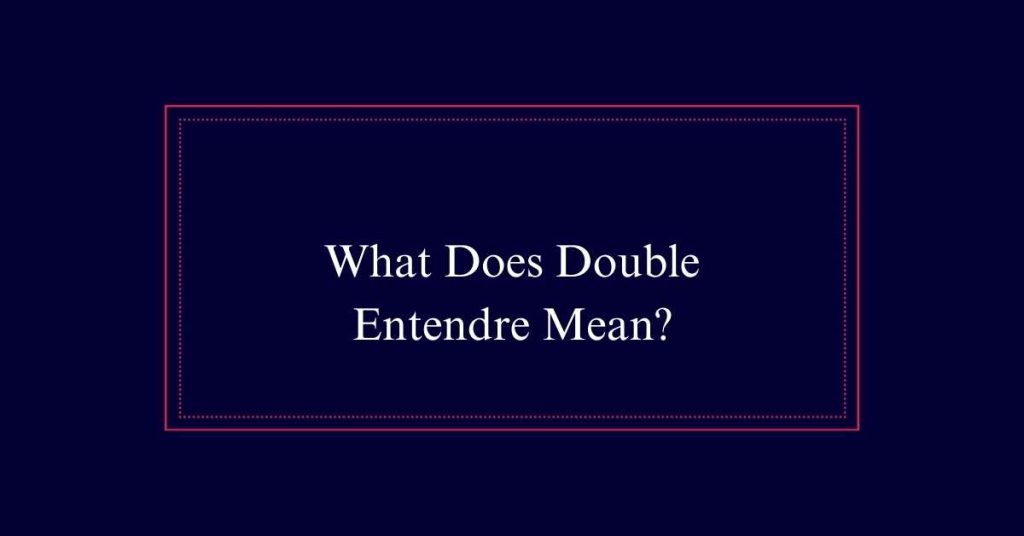
Rhetorical Device Benefits
The use of double entendres as a rhetorical device offers numerous benefits in both literature and everyday communication. They add layers of meaning, making texts more engaging and thought-provoking.
For instance, a writer might use a double entendre to hint at a character’s hidden motives. This can make readers think more deeply about the story.
In conversations, double entendres can inject humor and wit, making interactions more memorable. They also encourage active listening and critical thinking, as listeners must decipher both meanings. This makes communication more dynamic and interactive.
Examples in Media
Media outlets frequently spice up their headlines with clever double entendres to capture readers’ attention and convey multiple layers of meaning. These headlines often use wordplay to provide humor or an additional layer of context.
For example:
- DRUNK GETS NINE MONTHS IN VIOLIN CASE’: This headline plays on the word ‘case,‘ referencing both a legal case and a violin case.
- ‘CHILD’S STOOL GREAT FOR USE IN GARDEN’: Here, ‘stool’ can mean both a small chair and feces, adding a humorous twist.
- ‘EYE DROPS OFF SHELF’: This headline uses ‘drops’ to mean both the fall of eye drops and the product being removed from a shelf.
Impact on Communication
Double entendres enhance communication by making it more engaging and thought-provoking. They prompt the audience to think critically about the intended message.
For instance, a headline like ‘Local High School Dropouts Cut in Half’ can mean a reduction in numbers or something more sinister. Such phrases create curiosity and invite deeper analysis.
In conversations, they can add humor and wit, making interactions more memorable. However, they also require careful use; not everyone may understand the hidden message, potentially leading to misunderstandings.
Despite this risk, the skillful use of double entendres can enrich communication, making it more dynamic and layered. This technique ultimately fosters a more interactive and mentally stimulating exchange of ideas.
Enhancing Writing With Double Entendres
Skillful writers frequently use double entendres to add depth and intrigue to their narratives. These clever phrases can make stories more engaging and multi-layered. By embedding double meanings within the text, authors invite readers to explore interpretations beyond the surface level.
- Humor: Double entendres can introduce subtle humor, making dialogue or scenes more entertaining.
- Character Development: They can reveal hidden aspects of a character’s personality or intentions.
- Plot Complexity: Integrating double meanings can foreshadow events or add twists to the storyline.
For example, in Shakespeare’s play ‘Hamlet,’ the line “Get thee to a nunnery” can mean both a convent and a brothel, enriching the dialogue’s impact.
Therefore, double entendres enhance writing by providing depth and complexity.
Frequently Asked Questions
How Does Culture Influence the Interpretation of Double Entendres?
Culture influences the interpretation of double entendres by shaping the shared knowledge and social norms of a community. For example, a pun understood in one culture may be lost or misinterpreted in another, affecting its impact.
Can Double Entendres Be Used Effectively in Formal Writing?
Yes, double entendres can be used effectively in formal writing. They add depth and intrigue when used carefully. For example, in legal documents, they can highlight nuanced meanings or in academic texts, they can engage readers.
What Are Some Pitfalls to Avoid When Using Double Entendres?
When using double entendres, avoid offending sensitive audiences, guarantee clarity to prevent misinterpretation, and maintain appropriateness for the context. Misuse can alienate readers or detract from the message, especially in formal or professional settings.
How Do Double Entendres Differ From Puns?
Double entendres have dual meanings, often with one suggestive interpretation. Puns rely on wordplay with similar-sounding words or meanings. For example, “Time flies like an arrow; fruit flies like a banana” is a pun.
Are Double Entendres Present in Different Languages?
Double entendres exist in many languages. They rely on wordplay and cultural context. For example, in French, “entre deux vins” means “between two wines” and “tipsy.” Such expressions enrich communication across various linguistic traditions.
